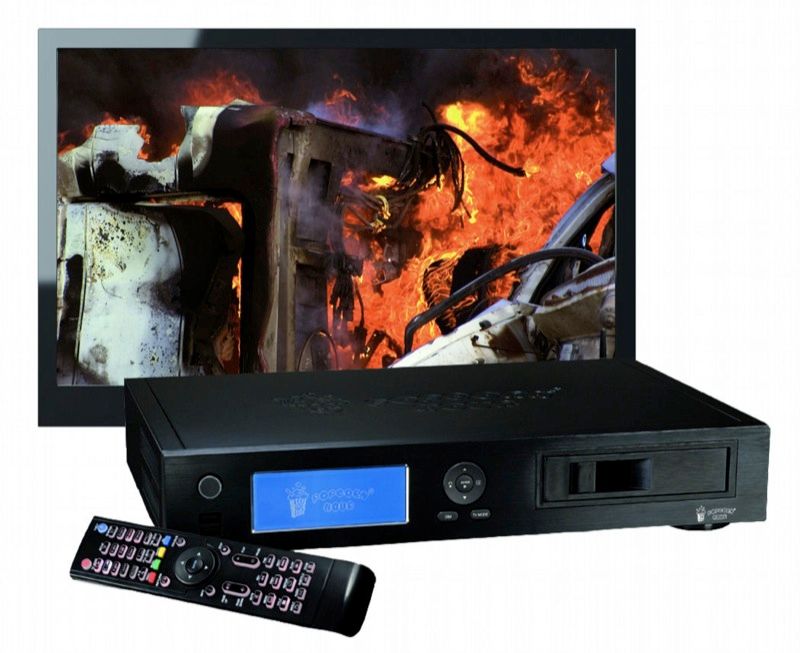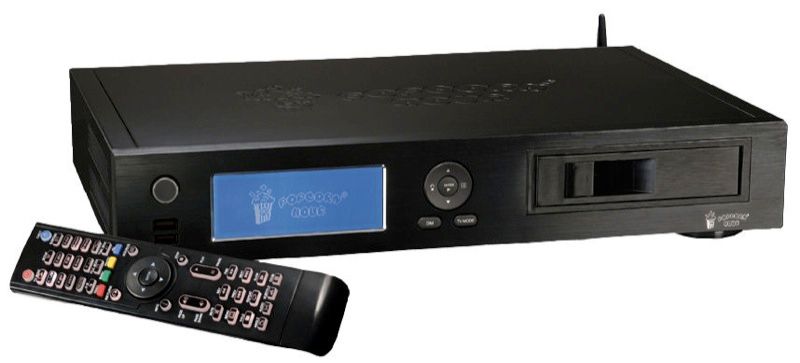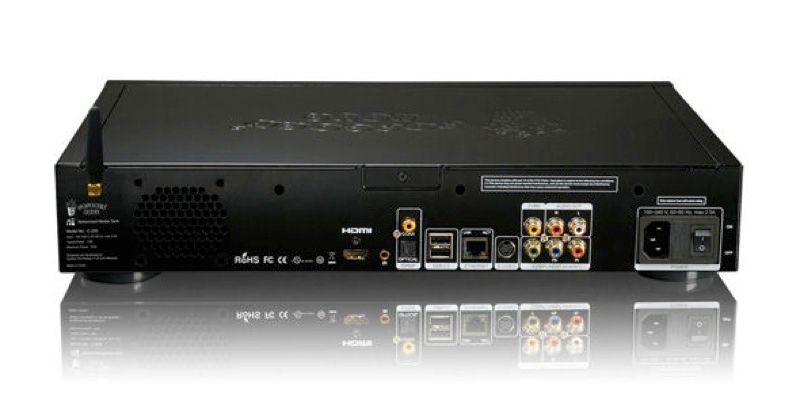Following our report that AdvancedMP3Players has begun to stock the Popcorn Hour C-200 for the UK market, we’ve managed to get our hands on a unit and have put it through its paces.
Our quick take
Fans of the Popcorn Hour series will no doubt be pleased with the C-200, which offers an impressive degree of expandability and maintains top-notch file support and performance. Fulfilling its potential is an expensive venture however, and there’s no real excuse for omitting key features such as built-in wireless. Those who appreciate a more open platform in which to experiment will laud its benefits, but in truth we should expect more bang for our buck considering a swathe of capable rivals.

Popcorn Hour C-200 Networked Media Tank - 3.5 / 5
| FOR | AGAINST |
|---|---|
|
|
The successor to the popular A-100/110 builds on the key areas that brought it so much success (albeit in a rather niche market) in the past by making it more versatile and more flexible than ever before.
It offers a wide range of connectivity that includes typical Composite, Component and S-Video, optical and S/PDIF audio and of course, HDMI v1.3a as the most popular connection of choice. A total of four USB2.0 ports make for easy access to external storage and a relatively poor 4.5-inch two-colour LCD display allows users to view collections and, for example, browse and play back music without the need for a dedicated display.
Initial setup is fairly straightforward provided you know how to configure audio and video settings and create network shares for a media collection, with a wide range of methods supported here including SAMBA folder sharing and UPnP servers. Whichever you choose, access is granted through a clean interface that separates files into video/audio/photo views and we’re not surprised at all, considering Popcorn Hour’s experience in this area, to see excellent file support and performance.
We streamed a wide range of media formats across a network and were pleased to note that just about everything was handled with aplomb - very little buffer time is required before playback starts and search and skip features are very responsive. The C-200 is also nicely customisable, with a range of skins available for the interface and a decent amount of media control during playback.
Sadly, the C-200 doesn’t support direct streaming via YouTube, but there are a wide range of additional resources available to send video, audio and photos directly to a TV via online services. These are handled quite well for the most part, though it’s clearly a case of quantity over quality in terms of the popular alternatives that are available elsewhere.
It would sound as though the C-200 is building up to be one of the most versatile and effective media streamers on the market, but there are a number of problems with the device that, in our opinion, will leave it (rather typically) restricted to a rather niche audience.
While you’ll get a bit of change from £300 for the basic setup, much of the C-200’s potential will only be realised by investing in a range of optional add-ons. These involve an internal hard drive - both 3.5-inch and 2.5-inch SATA models are supported, and an optional Blu-ray drive – though in this case a 2.5-inch hard drive must be used if required in tandem. This would be a significant benefit for most, though obviously jacks up the asking price by around £100. There’s no built-in wireless either, for which an additional dongle or PCI-card is required, and the supplied remote control works by RF transmission rather than IR, though the latter is again supported via optional accessories.
Adding components such as an internal drive is fairly typical and Popcorn Hour should be commended for even offering Blu-ray support; something we want to see more of in this market, but we’re not too happy with the remote control and wireless issues and feel that considering the price of the base unit, this should be offered by default.
When this is combined with what is sometimes an almost unnerving complexity in terms of installing and configuring some of the more advanced features of the C-200, it culminates in what is yet another entry into a rather specialist market that, given the company’s expertise and excellent performance and file support, should really have been expanded to appeal to a more mainstream audience by now.
To recap
The C-200 is clearly aimed at more experienced users who appreciate the level of configuration and control available, but at this price it’s fair to expect a bit more in the basic package


